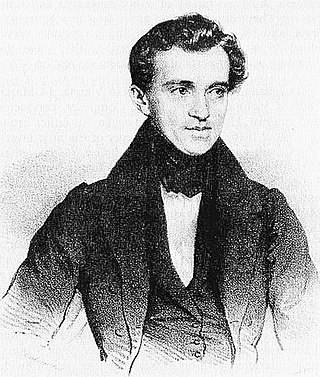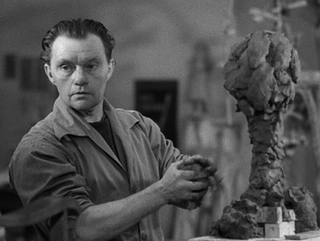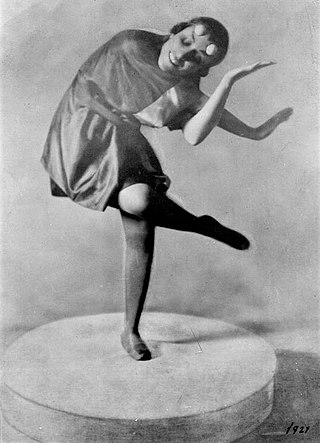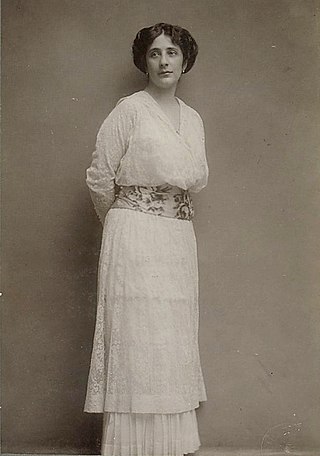
Andrea Amort (born 1958, Linz) is an Austrian dance critic, dance historian, playwright, festival and exhibition curator as well as a non-fiction writer. [1]

Andrea Amort (born 1958, Linz) is an Austrian dance critic, dance historian, playwright, festival and exhibition curator as well as a non-fiction writer. [1]
Andrea Amort studied modern dance and classical ballet with Erika Gangl and Andrei Jerschik in Linz, and Theatre Studies at the University of Vienna, where she received her doctorate in 1982 with a thesis on the story of the ballet of the Vienna State Opera from 1918 to 1942. [2] [3]
From 1981 to 2009, she was a dance critic and sometimes also an editor and deputy director of the cultural department of Vienna's Daily Kurier. Presently she writes for international media and trade magazines.
After teaching at the Anton Bruckner Private University for Music, Drama, and Dance, she moved in 2003 to the Music and Arts University of the City of Vienna. She has lectured in London, Oxford and Paris and teaches at the University of Zurich, as well as working on documentary films.
From 2009, she has worked as a curator for theatre, dance and performance on behalf of Vienna, where she currently lives. [2]

Johann Baptist Strauss I, also known as Johann Strauss Sr., the Elder or the Father, was an Austrian composer of the Romantic Period. He was famous for his light music, namely waltzes, polkas, and galops, which he popularized alongside Joseph Lanner, thereby setting the foundations for his sons—Johann, Josef and Eduard—to carry on his musical dynasty. He is best known for his composition of the Radetzky March.

Expressive dance from German Ausdruckstanz, is a form of artistic dance in which the individual and artistic presentation of feelings is an essential part. It emerged as a counter-movement to classical ballet at the beginning of the 20th century in Europe. Traditional ballet was perceived as austere, mechanical and tightly held in fixed and conventional forms. Other designations are modern dance and free dance, expressionist dance or new artistic dance, in Anglo-American countries German dance. In 2014, modern dance with the stylistic forms and mediation forms of rhythmic and expressive dance movements was included in the German List of intangible Cultural Heritage as defined by the UNESCO Convention for the Safeguarding of Intangible Cultural Heritage. German Expressionist dance is related to Tanztheater.

Fritz Cremer was a German sculptor. Cremer was considered a key figure in the art and cultural politics of East Germany. He is most notable for being the creator of the "Revolt of the Prisoners" memorial sculpture at the former concentration camp of Buchenwald.

Ottilie Ethel Leopoldine Herbert, Countess of Carnarvon, known professionally as Tilly Losch, was an Austrian dancer, choreographer, actress, and painter who lived and worked for most of her life in the United States and United Kingdom.

Grete Wiesenthal was an Austrian dancer, actor, choreographer, and dance teacher. She transformed the Viennese Waltz from a staple of the ballroom into a wildly ecstatic dance. She was trained at the Vienna Court Opera, but left to develop her own more expressive approach, creating ballets to music by Franz Schreker, Clemens von Franckenstein, and Franz Salmhofer, as well as dancing in her own style to the waltzes of Johann Strauss II. She is considered a leading figure in modern dance in Austria.

The Carltheater was a theatre in Vienna. It was in the suburbs in Leopoldstadt at Praterstraße 31.

Hilde Boman-Behram was an expressionist dancer, choreographer and dance teacher whose pioneering work in integrated dance transformed modern dance.

Gertrud Bodenwieser, also known as "Gertrude", was a dancer, choreographer, dance teacher and pioneer of expressive dance.

Hanna Berger was an Austrian dancer, choreographer, teacher, director, theatre director, writer and lifelong anti-Nazi and communist. She was described as part of the free dance movement.

Dr. Emil Mayer was an Austrian photographer, lawyer, inventor, and businessperson.
Liquid Loft is an internationally active dance company based in Vienna, Austria. It was jointly founded in 2005 by the choreographer Chris Haring, the dancer Stephanie Cumming, the musician Andreas Berger and the dramaturge Thomas J. Jelinek.

Christian Haring is an Austrian dancer and choreographer. He is founder and artistic director of the dance company Liquid Loft.

Claudia Rosiny is a German-Swiss academic in Dance and Media studies, a festival director and cultural manager. She became internationally known as an expert on video dance. Having served as a co-director of the Berne Dance Days for many years, she is in charge of the Performing Arts at the Federal Office of Culture Berne and teaches at the Lucerne University of Applied Sciences and Arts.

Editta Braun is an Austrian choreographer, stage dancer, dance pedagogue as well as founder and director of the Salzburg dance company Editta Braun Company. She is known as a pioneer of contemporary dance in Austria and chairwoman of tanz_house, the association of freelance choreographers based in Salzburg.

Karl Haffner (pseudonym), real name Karl Schlechter, was a German dramaturge.
Fritz Walden, real name Friedrich Drobilitsch, also Fritz Drobilitsch-Walden and Franz Drobilitsch, was an Austrian publicist, author and cultural editor as well as film, literature, music and theatre critic.

Bella Paalen, real name Isabella Pollak was an Austrian-American operatic contralto of Hungarian origin. She was engaged for 31 years at the k.-k. Hofoper in Vienna, later the State Opera, was appointed Kammersängerin there in 1933 and had to leave the country after the Anschluss because of her Jewish origins.

Frank-Manuel Peter is a German dance researcher and historian.
Fritz Böhme was a German dance publicist and cultural journalist.